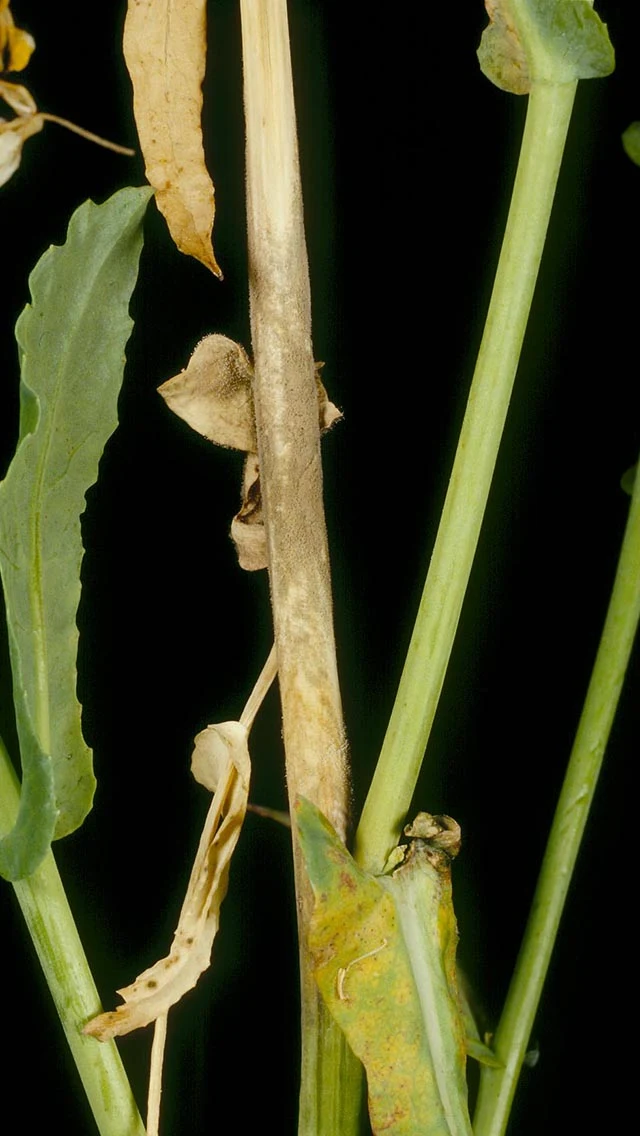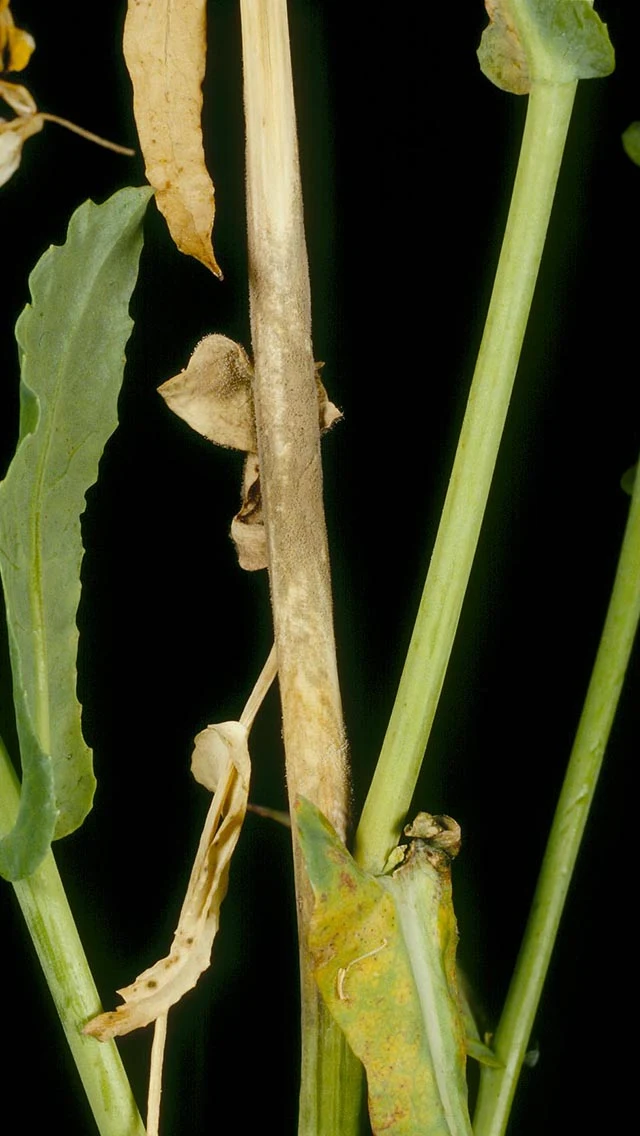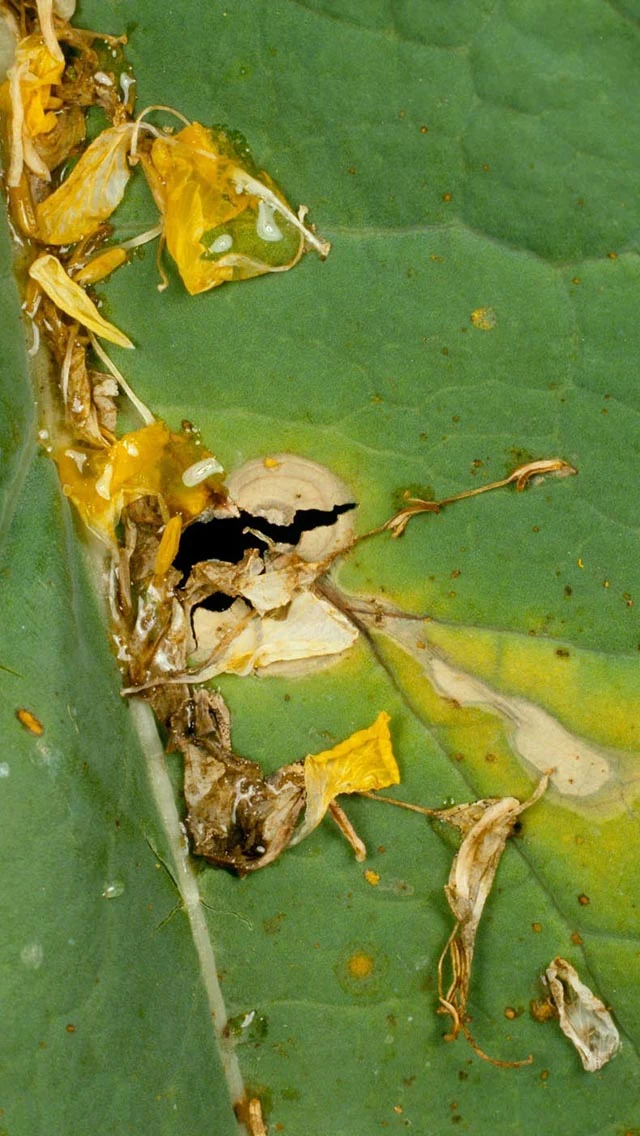
Botrytis (Grey Mould)
Botryotinia fuckeliana (asexual stage Botrytis cinerea)
Pathogen
Fungus
Hosts
Oilseed Rape, also found on a very wide range of crop and weed species.
Symptoms
Grey/fawn leaf spots or stem lesions, tissue rotting and the growth of a grey/fawn mould.
Development
The fungus usually infects damaged stems, flower stalks or leaves during flowering. The sites of infection then sporulate and can infect all other aerial parts of the plant. Botrytis is a prolific producer of air- borne spores.
Favourable Factors
Cool, wet weather after flowering, frost damage to flower heads, fertiliser scorch to leaves or flower heads and pest damage to pods.
Importance
Potentially serious yield losses, but outbreaks have been limited in the UK.
Control
There are no known resistant varieties
Avoid crop damage by fertiliser scorch, mechanical injury or pest infestation.
Foliar fungicides for control of oilseed diseases can be effective in controlling Botrytis

Botrytis on OSR stem

Botrytis developing on fallen petals

Leaf infection

Dead inflorescence caused by Botrytis


